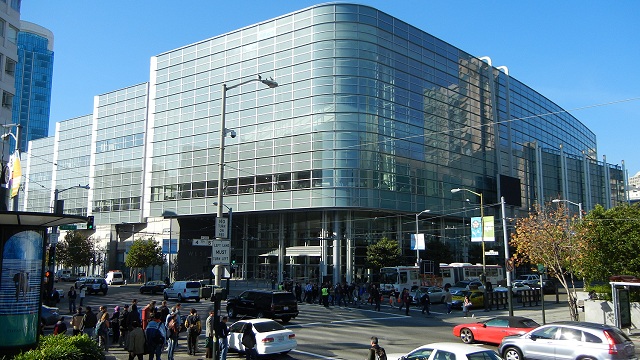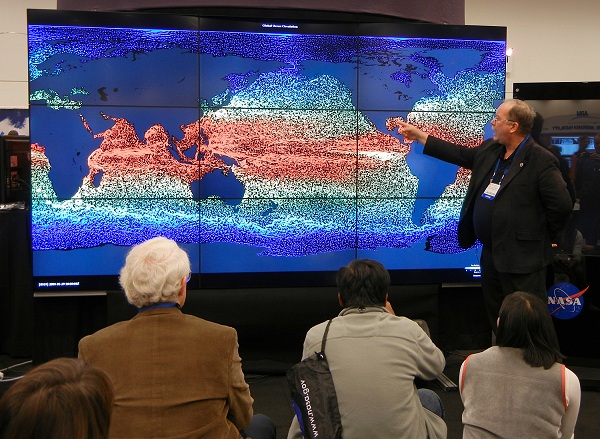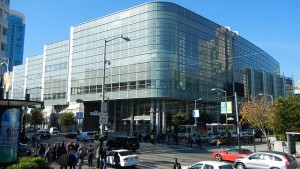
This week San Francisco pays host to the annual meeting of the American Geophysical Union. Most of us just call the occasion "AGU." I always go. Here's what it's like.
The AGU meeting is the world's largest gathering of Earth scientists, and it's been held in San Francisco in early December every year since the 1960s. By now it's been around longer than Herb Caen. Over the years it has grown into a Woodstock-size event and moved from the old Civic Center to the Moscone Center. What do 20,000 scientists do here for a week?
They give scientific talks, of course, the traditional short lecture with slides about what they're up to, given to a roomful of their closest colleagues. Prominent scientists give longer lectures to very large rooms, and often it's standing room only. Sessions may deal with dry topics, but sometimes there are intangible extras, like the session I saw Wednesday in which each of the speakers paused to remember their colleague, the late Jean Francheteau, with photos and reminiscences.
But more and more, the meeting's science is presented on posters: a 4-by-6-foot panel on which a scientist hangs a large printed poster, standing there for a scheduled time period to discuss the work with anyone who stops by.
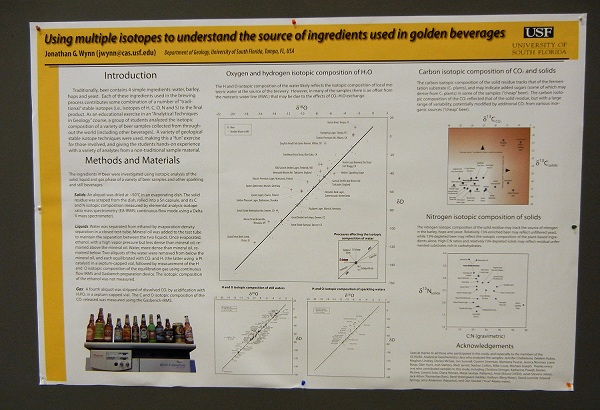
Posters fill Moscone Center South, several acres of them. The nice thing about posters is that the interaction is of high quality, unlike a lecture where time is limited and you can't have a proper dialog. They can be quite popular, especially in mid-afternoon when the beer is served.
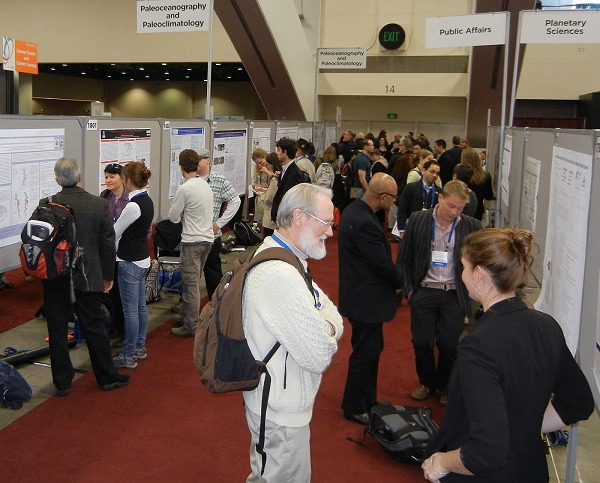
The atmosphere is high-energy, even at 8 a.m. when proceedings open. The whole world is represented, as well as all ages. You can see the gleam in a student's eye who is meeting a grand old scientific titan for the first time—and the corresponding pleasure of passing wisdom on to the next generation.
